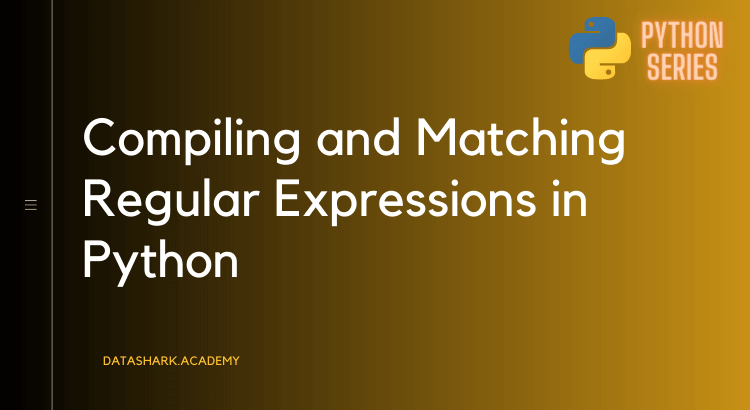Generators are a special type of function in Python that allows you to create iterators. They are defined using the def keyword, similar to...
Continue readingTag: Python
What is Python
Python is a popular high-level, interpreted, and dynamically-typed programming language. It was created by Guido van Rossum and first released in 1991. Python is known for its simplicity, readability, and versatility, making it a widely-used language in various domains, including web development, data science, machine learning, scientific computing, artificial intelligence, automation, and more.
Python has a large standard library that provides numerous modules and packages for various functionalities, making it easy to develop applications and solve complex problems efficiently. Python’s syntax is designed to be easy to understand and write, with a focus on code readability, which makes it a popular choice for both beginners and experienced developers.
Some of the key features of Python include its dynamic typing, automatic memory management, extensive standard library, support for multiple programming paradigms (such as procedural, object-oriented, and functional programming), and a large and active community of developers who contribute to its development and create third-party libraries and frameworks.
Python has a vast ecosystem of libraries and frameworks that extend its capabilities, such as NumPy for numerical computing, Pandas for data analysis, Django for web development, TensorFlow for machine learning, and many more. This makes Python a powerful tool for a wide range of applications and domains.
Overall, Python is a versatile, powerful, and user-friendly programming language that is widely used in various fields, making it a popular choice for developers, data scientists, researchers, and enthusiasts alike.
Whether you are new to Python or already familiar with the language, our blog will provide valuable insights, practical tips, and comprehensive tutorials to help you level up your Python skills and explore the vast possibilities of this powerful programming language. So, buckle up and get ready to embark on an exciting journey into the world of Python!
How to rightly use Python Collection’s defaultDict class
The defaultdict class in Python's collections module is a subclass of the built-in dict class that provides a convenient way to specify default values...
Continue readingComprehensive Guide to Compiling and Matching Regular Expressions in Python
Regular expressions (regex) are powerful tools for pattern matching and text manipulation in Python. They provide a concise and flexible way to search, extract,...
Continue readingUnderstanding Unicode Encoding & Decoding in Python
Unicode is a character encoding standard that assigns a unique code point to each character from every writing system in the world, including emojis,...
Continue readingMastering Regular Expressions in Python: A Comprehensive Guide with Real-world Examples
Regular expressions, also known as regex, are a powerful tool for manipulating and extracting data from strings in Python. They are a sequence of...
Continue readingHow to Import from a Source File in Python: A Comprehensive Guide with Code Examples
In Python, importing code from separate files is a powerful technique for organizing and reusing code. It allows developers to modularize their codebase and...
Continue readingHow to use Python Collection Module’s Counter class
The collections module in Python provides a set of specialized container data types that are extensions of the built-in types. These containers offer more...
Continue readingHow to use OrderedDict class in Python
Python’s collections module provides a powerful and efficient implementation of ordered dictionaries using the OrderedDict class. In this article, we will learn how to...
Continue readingHow to use namedTuple in Python
namedtuple is a subclass of Python’s built-in tuple class, which allows us to give names to each element in a tuple. This can make...
Continue readingAdvanced Python: Deque or Double ended queues
Python's deque is a versatile and efficient data structure that provides constant time complexity for appending and popping elements from either end of the...
Continue readingAdvanced Python Argument Parsing with argparse: A Step-by-Step Guide with Code Examples
Python provides a powerful module called argparse that makes it easy to write user-friendly command-line interfaces. With argparse, you can define the arguments your...
Continue readingHow to Check if a Module is Imported in Python: A Step-by-Step Guide
In this blog post, we will explore different techniques to check if a module is already imported in Python. We will discuss how to...
Continue readingUnderstanding Dynamic Imports in Python: A Guide with Examples
Learn how dynamic imports work in Python and how to use them to import modules at runtime based on some conditions. Improve your Python...
Continue readingMastering Dynamic Imports with Python’s Importlib Package
Learn how to dynamically import modules and packages at runtime using Python's importlib package. Improve the flexibility and power of your Python programs with...
Continue readingA Comprehensive Guide to Advanced Python’s Contextlib Module: Classes, Examples, and Use Cases
Python's contextlib module is a powerful tool for working with context managers. Context managers are used to manage resources that need to be cleaned...
Continue readingMastering PySpark Window Ranking Functions: A Comprehensive Guide with Code Examples and Performance Profiling
In this article, we will discuss PySpark Window Ranking Functions, which are used to sort and rank data within groups. We will cover various...
Continue readingApache Kafka: A Step-by-Step Guide to Handling Producer and Consumer Failures
Comprehensive guide on how to handle Apache Kafka producer and consumer failures. This post offers step-by-step code examples and practical advice on configuring fault...
Continue readingMastering Apache Kafka Architecture: A Comprehensive Tutorial for Data Engineers and Developers
An in-depth overview of the architecture of Apache Kafka, a popular distributed streaming platform used for real-time data processing. It explores the key components...
Continue readingManaging Resources with Context Managers and Contextlib in Advanced Python: A Comprehensive Guide with Examples
Context manager is an object that defines the methods __enter__() and __exit__() which can be used to set up and tear down a context....
Continue readingPySpark Window Functions – Lagged Columns with Code Examples
In PySpark, window functions are a powerful tool for data manipulation and analysis. They allow you to perform complex computations on subsets of data...
Continue reading



















